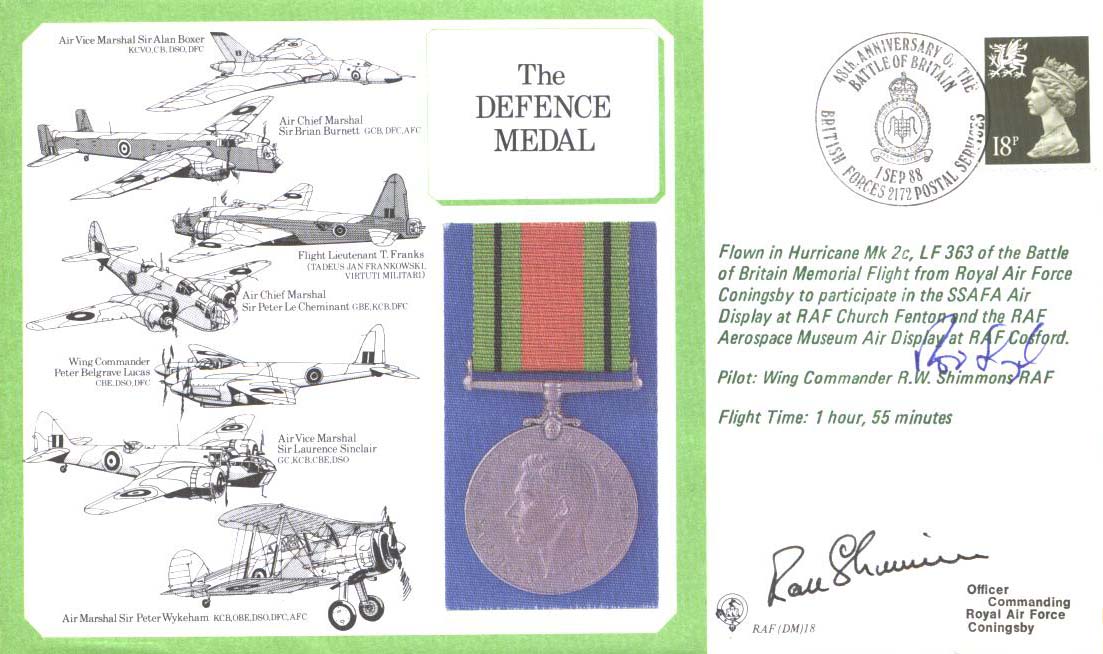
|
LEAROYD Roderick
LEAROYD Roderick
Flight Lieutenant Roderick Learoyd
"On 12/13 August 1940 five Handley Page Hampdens of Nos. 49 and 83 Squadrons, after intensive practice-bombing by night of canals in East Anglia, took off to attack this aqueduct. Other Hampdens meanwhile were to make diversionary raids.
First to bomb was Squadron Leader 'Jamie' Pitcairn-Hill DFC, of No 83 who went in at 100 feet and brought back to his badley shot-up machine. Two Hampdens piloted by Australians followed: one managed to attack but both were shot down. The fourth Hampden went in next, bombed, was hit, and crawled back to England on one engine.
The last of the five, through a storm of flak from guns lining both sides of the canal directly along his path, came the Hampden of Flight Lieutenant Roderick 'Babe' Learoyd, of 49 Squadron, who had already flown more than twenty operations. Though blinded by searchlights and having to trust his bomb-aimer, Sergeant John Lewis, Learoyd attacked from 300 feet in a shallow dive and planted a special 'M' Bomb, fused for ten minutes delay, near the bank of the aqueduct. He then brought his badly damaged aircraft, with its hydraulics ruptured and flaps and undercarriage out of action, back to Scampton. It was 2 a.m., and he had to circle around for three hours before dawn broke and he could risk a belly-landing. For his gallantry and determination, Flight Lieuteant Learoyd received the Victoria Cross."
OBITUARY : Wing Cdr Roderick Learoyd VC
CHRISTOPHER FOXLEY-NORRIS
Wing Commander Roderick "Babe" Learoyd was awarded the Victoria Cross for his conduct during a bombing raid over Germany on 12 August 1940.
As one of a series of operations, Acting Flight Lieutenant Learoyd was ordered to lead a formation of Hampden twin- engine bombers (six from his own squadron, No 49) into Germany. The aircraft were slow, unsophisticated, and poorly defended. Their target was the aqueduct carrying the Dortmund-Ems canal.
This was known to be a target of special importance in view of the essential build-up of barges and other shipping for industrial and military support and particularly for the shipping planned for the Channel ports invasion. In view of this the Germans had provided overwhelming anti-aircraft defences in the form of hundreds of guns of all calibres and massed searchlights designed to blind the crews.
The latter had to fly at bombing levels down to 150ft to ensure the necessary accuracy and from a predictable direction obvious to the enemy. Learoyd and his crews were well aware of what they were asked to face, having attacked the canal before. Indeed to fly with bomber command made such experiences familiar to all.
After starting its bombing run Learoyd's aircraft was literally shot to pieces, losing among other things his undercarriage controls and his landing flaps. He later paid tribute to the immense skill and courage of his three-man crew. It is certainly worth noting that one of his gunners was neither an officer nor an NCO but a regular airman, which was quite common in those days in bombers, in Lysanders and in Defiant fighters. These men were paid one shilling and sixpence per day. Their carrier pigeons, one of whom laid an egg while they were over the target, only got rations.
The canal was successfully put out of action for 10 critical days. Having succeeded by a near miracle in escaping its defences, Learoyd arrived back over his base with nearly three hours of darkness still to come. He decided that a night landing would be too dangerous for his crippled aircraft and he orbited till daylight, when he made a perfect belly-landing without undercarriage or flaps and without injury to anyone.
It has sometimes given cause for comment that such experiences did not see the end of wartime flying for RAF pilots. Anything but. Learoyd continued to fly operationally with bomber command, eventually commanding No 44 squadron, which was the first unit to be equipped with the famous four- engined Lancaster bomber.
Like many of those who won the VC, he did not appear to be a particularly likely candidate for that supreme honour. After being educated at Wellington, he pottered about for a few years before taking a short service commission in the Royal Air Force and being posted to bomber command. Operational from the outbreak of war, he soon established a reputation for professional expertise and outstanding determination in locating and attacking heavily defended targets. But he was not an obviously notable or inspirational leader. He was a quiet and reserved man but also a friendly and comradely one. A good man at a party, but never allowing social life to interrupt his fighting career. Even after the award of the VC he gave no hint of conceit or self- importance.
After surviving the war Learoyd retired to civilian life, first as a VIP pilot and later as an export sales manager in the motor industry.
Christopher Foxley-Norris
Roderick Alastair Brook Learoyd, air force officer: born Folkestone 5 February 1913; VC 1940; died 24 January 1996.
Signed Postal cover
Price: $35.00
Please contact us before ordering to confirm availability and shipping costs.
Buy now with your credit card
other ways to buy
|


